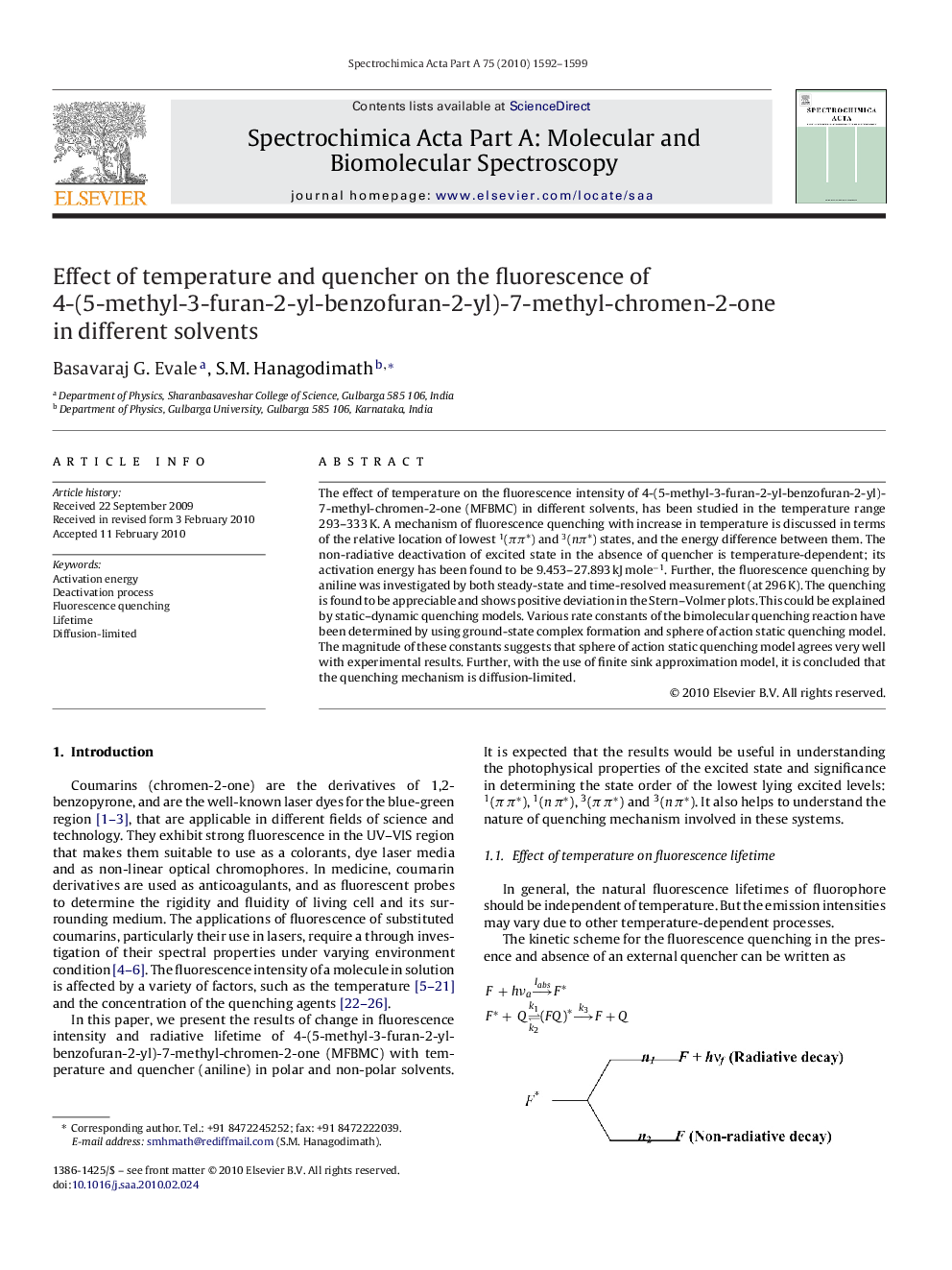| Article ID | Journal | Published Year | Pages | File Type |
|---|---|---|---|---|
| 1232564 | Spectrochimica Acta Part A: Molecular and Biomolecular Spectroscopy | 2010 | 8 Pages |
The effect of temperature on the fluorescence intensity of 4-(5-methyl-3-furan-2-yl-benzofuran-2-yl)-7-methyl-chromen-2-one (MFBMC) in different solvents, has been studied in the temperature range 293–333 K. A mechanism of fluorescence quenching with increase in temperature is discussed in terms of the relative location of lowest 1(ππ*) and 3(nπ*) states, and the energy difference between them. The non-radiative deactivation of excited state in the absence of quencher is temperature-dependent; its activation energy has been found to be 9.453–27.893 kJ mole−1. Further, the fluorescence quenching by aniline was investigated by both steady-state and time-resolved measurement (at 296 K). The quenching is found to be appreciable and shows positive deviation in the Stern–Volmer plots. This could be explained by static–dynamic quenching models. Various rate constants of the bimolecular quenching reaction have been determined by using ground-state complex formation and sphere of action static quenching model. The magnitude of these constants suggests that sphere of action static quenching model agrees very well with experimental results. Further, with the use of finite sink approximation model, it is concluded that the quenching mechanism is diffusion-limited.
